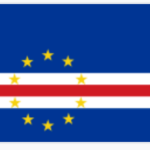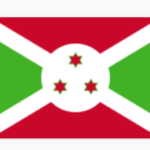Cameroon is a Central African country with a diverse and rich culture. It is often called “Africa in miniature” because of its varied geography, languages and ethnic groups. It has a population of about 27 million people, who speak 250 native languages and either English or French or both as official languages. Cameroon has a history of colonialism, independence movements, political stability and civil unrest. In this blog post, we will explore some of the main aspects of Cameroon’s culture, history, politics and economy.
Culture
Cameroon’s culture is influenced by its many ethnic groups, each with their own traditions, customs and beliefs. Some of the major ethnic groups are the Bamileke, the Fulani, the Beti, the Bassa, the Bamoun and the Tikar. Cameroon also has a large number of Baka pygmies, who live in the rainforest and practice hunting and gathering. Cameroon’s culture is also shaped by its colonial past, as it was ruled by Germany, France and Britain at different times. Cameroon has a vibrant artistic scene, with music, dance, literature and cinema being popular forms of expression. Some of the famous Cameroonian artists are Manu Dibango, a saxophonist and singer; Francis Bebey, a novelist and musician; Mongo Beti, a writer and activist; and Jean-Pierre Bekolo, a filmmaker.
History
Cameroon’s history dates back to ancient times, when the Sao civilization flourished around Lake Chad. Later, various kingdoms and chiefdoms emerged in different regions, such as the Adamawa Emirate in the north and the Bamoun Kingdom in the west. The Portuguese were the first Europeans to reach Cameroon’s coast in the 15th century, and they named it Rio dos Camarões (Shrimp River) after the abundance of prawns they found there. The name was later anglicized to Cameroon. In the 19th century, Cameroon became a German colony under the name of Kamerun. After World War I, it was divided between France and Britain as League of Nations mandates. The French part became independent in 1960 as the Republic of Cameroun, under President Ahmadou Ahidjo. The British part joined it in 1961 to form the Federal Republic of Cameroon. In 1972, the federation was abolished and the country became a unitary state. In 1982, Ahidjo resigned and was succeeded by Paul Biya, who has been in power ever since.
Politics
Cameroon is a unitary presidential republic with a multi-party system. The president is the head of state and government, and is elected for seven-year terms by universal suffrage. The president appoints the prime minister, who is the head of the cabinet. The bicameral parliament consists of the Senate and the National Assembly. The Senate has 100 members, 70 elected by indirect vote and 30 appointed by the president. The National Assembly has 180 members elected by direct vote for five-year terms. The judiciary is independent and comprises the Supreme Court, the Constitutional Council and lower courts. Cameroon has been criticized for its human rights violations, corruption, lack of democracy and press freedom. The country has also faced several challenges such as terrorism from Boko Haram in the north, separatism from Anglophone regions in the west and humanitarian crises from refugees and internally displaced people.
Economy
Cameroon’s economy is one of the most diversified in Africa, with agriculture, industry and services being its main sectors. It is endowed with natural resources such as oil, gas, timber, minerals and hydroelectric power. It is also a regional hub for trade and transport, with access to both Atlantic Ocean and landlocked neighbours. However, Cameroon’s economic growth has been hampered by poor infrastructure, governance issues, social inequalities and environmental degradation. It is classified as a lower-middle-income country by the World Bank, with a GDP per capita of $1,533 in 2020. It faces high levels of poverty (37% in 2014), unemployment (4% in 2019) and underdevelopment (153rd out of 189 countries in Human Development Index in 2020). Cameroon’s main trading partners are China, France, Nigeria and Spain.








